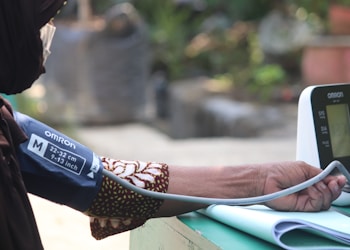The intersection between DNA and information technology is one that has been growing in importance as the two disciplines become increasingly intertwined. As we learn more about the way that DNA can be used to store and process information, the relationship between the two is becoming more and more important. In this article, we’ll explore the link between DNA and information technology and its implications for the future. Keep reading to find out more.
Automated Lab Experiments
Information technology (IT) is being used to study and analyze the structure of DNA. This has enabled scientists to gain a better understanding of how genetic material works, as well as its potential implications for medicine, biotechnology, and even data storage. IT professionals are playing an important role in this work by providing expertise in areas such as computer programming, software engineering, database management systems, information retrieval systems, and artificial intelligence. These professionals often collaborate with biologists to develop new software tools that can be used for analyzing genetic data more accurately or efficiently than before. If you’re interested in this field, then you may want to earn a information technology masters degree. Advanced education through an online degree program allows you to attend school and complete coursework without having to attend class in person. As an example of how IT can be used for DNA research, one can combine genetics with robotics for automated lab experiments. This technology has tremendous potential to revolutionize the way scientists conduct research, as it would allow them to automate much of the tedious manual labor associated with genetic experiments. For example, instead of manually transferring samples between multiple flasks or test tubes, a robotic arm could be programmed to take care of all such tasks quickly and accurately. Additionally, machines can also be used to carry out more complex procedures that are difficult or impossible for humans to do on their own.
Machine Learning and Genetic Variations
Through the use of advanced algorithms, AI technologies are able to examine large amounts of data related to genetic variations and mutations, allowing researchers to gain insight into how diseases evolve and spread. By utilizing this technology, researchers are better able to identify potential treatments for illnesses that could not have been discovered through traditional methods. Machine learning is also being employed by scientists around the world to determine if certain genes or gene combinations are associated with specific traits or characteristics in an organism’s phenotype (appearance). This research has already revealed many interesting findings which may lead to improved therapies for various medical conditions. Moreover, machine learning allows scientists more accurately predict the likelihood of a particular mutation occurring within a population over time as well as its effects on future generations. Using these same tools, it is possible for individuals and companies alike to create tailored products based on their own unique genetic makeup—from personalized medicine all the way up to customized consumer goods like clothing items that fit perfectly due to taking individual measurements into account. Allowing us unprecedented access to understanding our biology at a molecular level further cements the link between DNA sequencing and information technology.
DNA Computing

DNA computing is an emerging field of research, which uses DNA molecules as a computational medium. It is a form of computing that uses the structure of DNA molecules to store and process data and has the potential to revolutionize computing technology. DNA computing is based on the idea that the structure of DNA molecules can be used to store and manipulate data in a way that is more efficient than traditional computers. The key advantage of DNA computing is its ability to perform massively parallel operations, which allows for faster and more accurate computation than conventional computers. Initially, researchers focused on using DNA as a medium for storing information. However, in recent years, researchers have focused on developing algorithms and methods to use DNA for computation. DNA computing has a number of potential applications. It could be used to solve problems that are too difficult for conventional computers to handle, such as finding the shortest path through a large network or solving complex optimization problems. In addition, DNA computing could be used to create more secure encryption algorithms, as DNA is much harder to crack than traditional methods.
There are also free sites to upload raw DNA data so you can learn more about your DNA and genetics. By combining the two disciplines, researchers have been able to gain a better understanding of how information is stored and processed and how DNA plays a part in that process. Additionally, the link between DNA and information technology has enabled scientists to develop new treatments, drugs, and technologies that could not have been possible without this connection.










